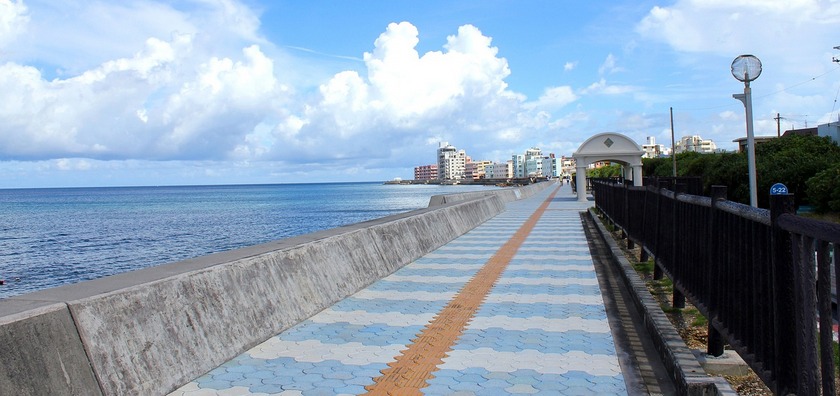Navigating the picturesque yet unpredictable beachside roads presents a unique set of challenges for drivers. These scenic routes, while captivating, harbour potential risks that require special attention and careful handling. From the unpredictability of coastal weather to the bustling tourist traffic, each turn and stretch demands vigilance. In such environments, the expertise of specialized legal guidance becomes invaluable, particularly when unforeseen incidents occur. Understanding the nuances of beachside driving and the complexities of legalities involved is crucial for anyone traversing these beautiful but sometimes treacherous paths.
Thursday, 16 December 2021

Beachside roads, with their allure and charm, also bring a spectrum of risks and hazards. One of the most significant challenges is the ever-changing weather conditions common to coastal areas. Drivers might encounter sudden fog, slippery roads due to ocean mist, or even unexpected tidal surges. Additionally, these areas often experience a significant influx of tourists, especially during peak seasons, leading to congested roads and a higher likelihood of accidents.
The mix of local traffic and visitors unfamiliar with the area can create unpredictable driving conditions. Heightened awareness and caution are paramount in these scenarios. Drivers must be prepared for abrupt changes in both weather and traffic patterns, underscoring the importance of understanding the unique risks associated with beachside roads. Instead of falling prey to the common risks, make sure you’re well prepared. Create an extensive beach road trip plan so that you and your companions can smoothly make this adventure a memorable one.
In the intricate realm of beachside road incidents, the role of a motor vehicle accident attorney is crucial. These legal professionals specialize in navigating the complex web of issues unique to accidents occurring in coastal areas. A Huntington Beach motor vehicle accident attorney, for instance, brings expertise in local traffic laws, understands the specific challenges of beachside accidents, and is adept at handling cases involving diverse parties like tourists and locals. They are instrumental in investigating the accident, gathering evidence that may be influenced by unique beachside conditions, and ensuring fair representation in insurance claims or legal disputes. Their knowledge extends beyond standard road accident scenarios, encompassing the environmental and jurisdictional peculiarities that beachside accidents often entail.
Driving by the sea has its charm, but the salty sea air and sand can be harsh on your car. To keep your ride in top shape, regular checks are key. Start with a routine rust inspection, especially around the undercarriage, which is most exposed to salt. Brakes, too, deserve extra attention; moisture and salt can lead to quicker wear. To combat the corrosive seaside air, a good wash and wax routine is crucial. Waxing forms a protective barrier, helping to shield the paint and bodywork from salt damage. Remember, a little care goes a long way in keeping your beachside drives smooth and worry-free.
Every beachside journey should start with a refresher on local driving laws – they’re not always the same as what you’re used to inland. Coastal areas often have specific regulations, especially in tourist-heavy zones. For instance, parking might be more restricted, with designated areas for visitors and time limits. Speed limits too can change abruptly, often reduced in areas with high pedestrian traffic. And don’t forget about seasonal changes; some roads might have different rules during peak tourist seasons. Staying informed not only ensures a hassle-free drive but also keeps you on the right side of the law.
The moments following a vehicle accident can be chaotic, especially on busy beachside roads. First, ensure everyone’s safety; move to a secure location if possible and check for injuries. Then, call emergency services if needed. Once immediate safety concerns are addressed, it’s time to document the accident scene. Take photos of the vehicles, surroundings, and any relevant road signs or conditions. Exchange information with the other party but avoid discussing fault. If there are witnesses, get their contact details. Throughout, remember to stay calm and methodical. Your composed approach will aid in efficiently handling the situation and support any necessary legal follow-ups.
Embracing the picturesque journey along beachside roads requires more than a sense of adventure; it demands a keen awareness and preparation. These coastal routes, while offering unparalleled views, also present distinct challenges. Ensuring your vehicle is fortified against the relentless coastal elements and acquainting yourself with the varying local traffic regulations are critical steps in safeguarding your driving experience.
In the event of an accident, having access to specialized legal knowledge from an expert becomes invaluable. Approach these roads with respect for their unique nature, armed with knowledge and a commitment to safety, ensuring every journey is as secure as it is memorable!













